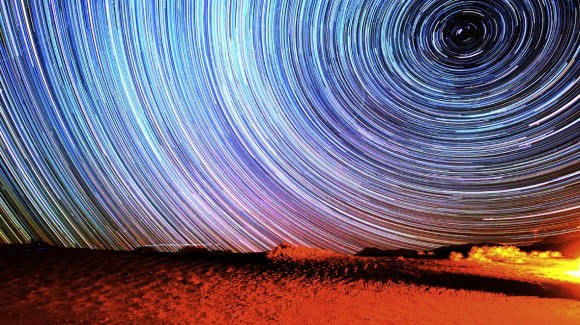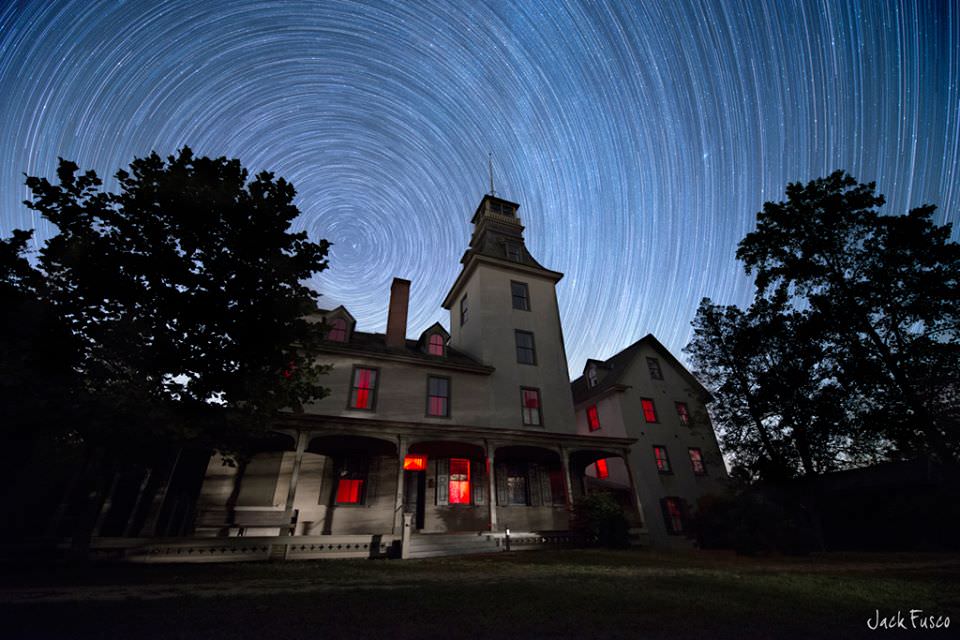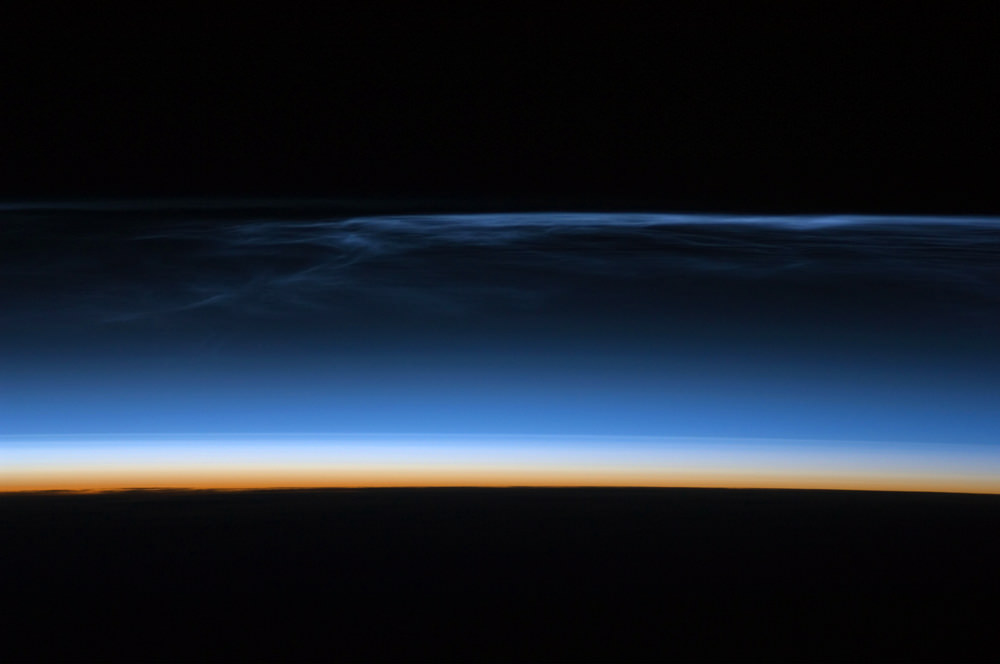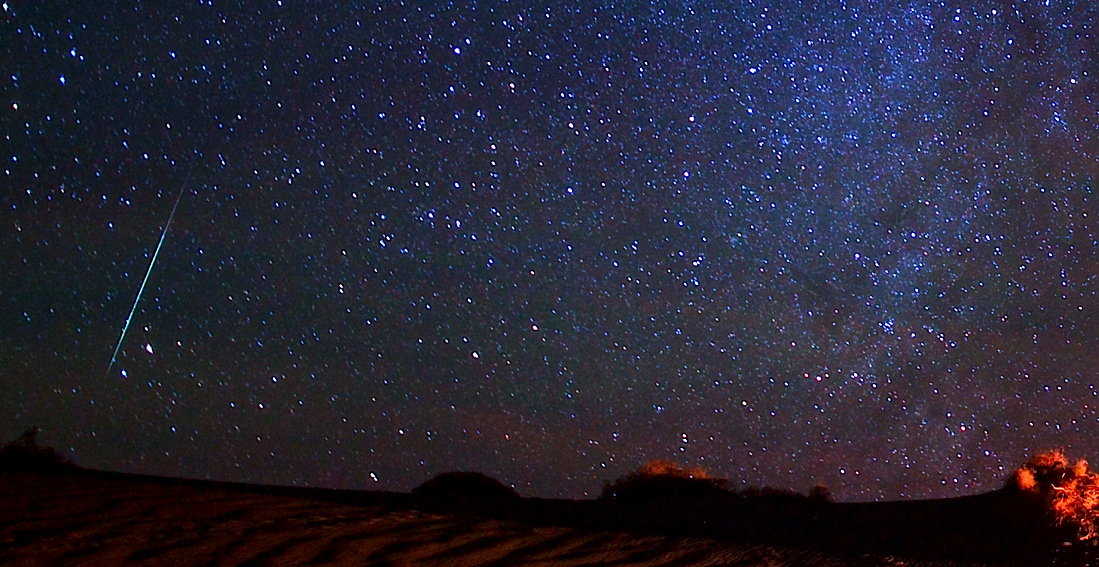This timelapse of the lunar eclipse that took place April 15, 2014 will have you checking over your shoulder for aliens! Photographer Andrew Walker shot this footage at the Caltech’s CARMA Array (Combined Array for Research in Millimeter-wave Astronomy) in the Inyo Mountains of California. You can find out more about his impressive equipment details here, but the very fitting music you may be familiar with: it’s from the movie “2001: A Space Odyssey.”
Continue reading “Dramatic Timelapse of the Recent “Blood Moon” Eclipse”
Simply Breathtaking Night Sky Timelapse: “Huelux” by Randy Halverson

Regular readers of Universe Today will be well-acquainted with the photography and timelapse work of Randy Halverson. He’s just released his latest timelapse and in a word, it is breathtaking. Aurora, thunderstorms — sometimes both at once — and, of course, stunning views of the night sky.
Randy shot the footage during April-November 2013 in South Dakota, Wyoming and Utah. “The weather in 2013 made it difficult for me to get some of the shots I wanted,” Randy said on Vimeo. “There were many times I planned to shoot the Milky Way or Aurora, and the clouds would roll in. But that also allowed me to get more night storm timelapse than I have any other year.”
He added that the aurora sometimes appeared without warning. In the video, be on the lookout for slow and fast moving satellites, quick meteors and slower moving airplanes. “The meteors are hard to see in timelapse, but you may see a quick flash because they only last one frame,” he said. “If you see a light moving across the sky, it is either an airplane or satellite, not a meteor.”
Sit back, put this on full screen and full sound and take a well-deserved break from your day!
Thanks once more to Randy Halverson for continuing to share his handiwork! Find out more about this timelapse at Randy’s website, Dakotalapse.
Huelux from Randy Halverson on Vimeo.
This Time-Lapse ISS Video Isn’t Just Another Time-Lapse ISS Video
It’s actually remarkably beautiful, and well worth two minutes of your time.*
Assembled from actual photographs taken by astronauts aboard the Space Station, many of them by Don Pettit during Expedition 31 (Don took a lot of photos) this timelapse “The World Outside My Window” by David Peterson ramps up the artistic value by featuring super-duper high definition, smoothed frame transitions and a musical score by “Two Steps From Hell.” (Don’t worry, that sounds scarier than it is.) Even if you’ve seen some of these clips before, they’re worth another go.
After all, there’s no good reason not to be reminded of how beautiful our planet is from space. Enjoy!
*It’s actually two minutes and twenty-eight seconds but I don’t think you’ll mind.
Timelapse: Aurora Over Lake Michigan
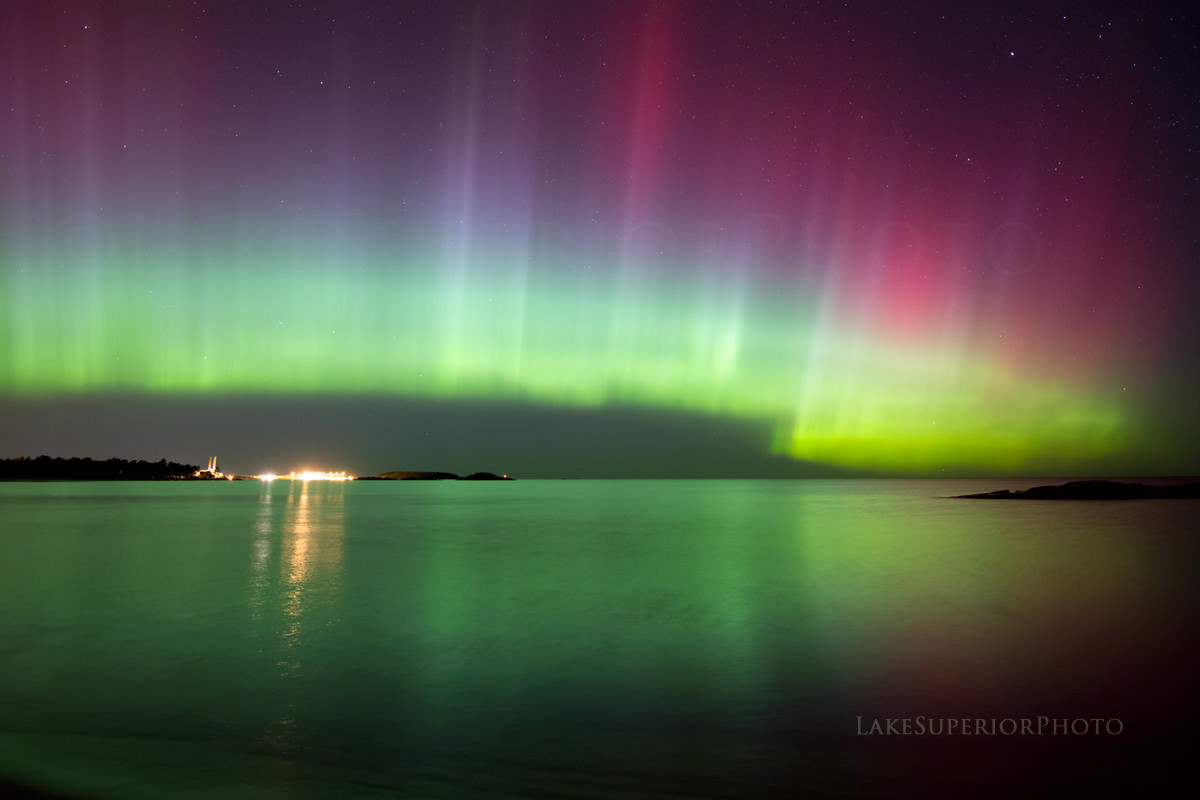
According to photographer Shawn Malone form Michigan, the aurora this fall have already been “insane!”
“We had a very strong auroral event here on October 2nd and 9th on Lake Superior in the Upper Peninsula of Michigan,” Malone said via email. “and what you are seeing in this video is the interaction of the solar wind impacting the magnetosphere at millions of miles per hour, that interaction causing the northern lights.”
These nights the aurora “really lit up,” said Malone.
And there could be more aurora coming soon to the northern skies: SpaceWeather.com is reporting that a coronal mass ejection propelled toward Earth by an M1-class eruption on October 13th is expected to hit our planet’s magnetic field on October. 15th. “Polar geomagnetic storms and high-latitude auroras are possible when the CME arrives,” says SpaceWeather.
Of course, not all aurora actually look like this to the human eye — you can read our article from earlier today about the reality of seeing aurorae with your eyes vs. a camera.
RADIANCE from LakeSuperiorPhoto on Vimeo.
Beautiful Timelapse: Night Sky at the Shore
Need a little inspiration to go out and do some stargazing this weekend? Look no further than this gorgeous timelapse by Jack Fusco. There are awesome views of both sea and sky, the Milky Way, star trails, awesome cloud scenes and funky, directionally-challenged moving lights in the sky.
I’ve been working on a timelapse of the night sky over the New Jersey coastline,” Jack told us via email. “New Jersey definitely isn’t the best location for stargazing, but I think given the circumstances, many people will be surprised. I hope it inspires people to set some time aside to stargaze where they live even if they previously thought it wasn’t worth trying.”
Jack said he’s been working on this one for 10 months, and it’s definitely worth the hard work he’s put in.
Jack also gives a shout out to those affected by Hurricane Sandy last year. “A special thank you to all of those who have worked so hard to restore the homes of those lost during Sandy,” he writes on Vimeo. “Thank you to every volunteer that has spent time bringing the beauty back to our boardwalks and our beaches. The last year has been filled with heartbreak and devastation with much work still being done.”
Check out more of Jack’s work on his website and Facebook.
Home At The Shore from Jack Fusco on Vimeo.
Beautiful Noctilucent Clouds 2013 — The Movie
Intrigued by mysterious noctilucent, or night-shining clouds? This beautiful new film from TWAN (The World At Night) photographer P-M Hedén combines timelapse and real-time footage to provide a stunning compilation of his month in the field in Sweden this summer to capture these lovely blue electric clouds. Noctilucent clouds are visible sometimes low in the northern sky during morning and evening twilight, usually through late May through August, and they seem to be increasing the past few years.
Enjoy the stunning, tranquil views (lots of wildlife and night sky imagery too!) and lovely music in this new film, just published yesterday.
For more information about NLCs, Bob King wrote a great overview for us earlier this year about these “visitors from the Twilight Zone!
Timelapse: Super Moon Rising Over the Rocky Mountians

Astrophotographer Cory Schmitz braved a brown bear in order to capture some wonderful images of the full Moon rise on July 22, 2013. This composite shows a series of images of the moonrise, and below is a beautiful timelapse.
This perigee Moon, a.k.a “Super Moon” was the third and final of the big full Moons for 2013. However, as astrophysicist Neil DeGrasse Tyson mentioned on Twitter, it is “Okay to call tonight’s Full Moon “super” but only if you would call a 13-inch pizza “super” compared with a 12-inch pizza.”
You can catch more of Cory with Fraser on the Virtual Star Parties on Sunday nights. Below are a couple of more great scenes from Cory’s full Moon experience:
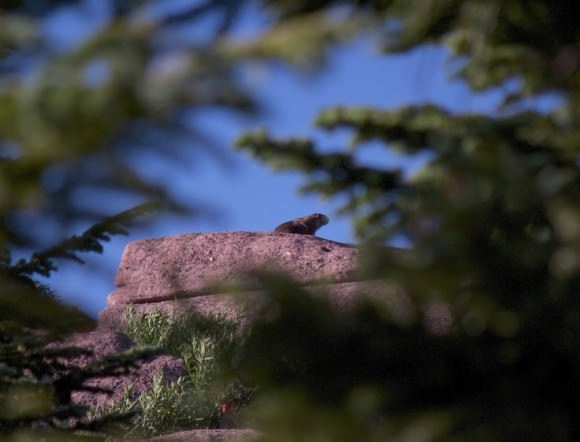
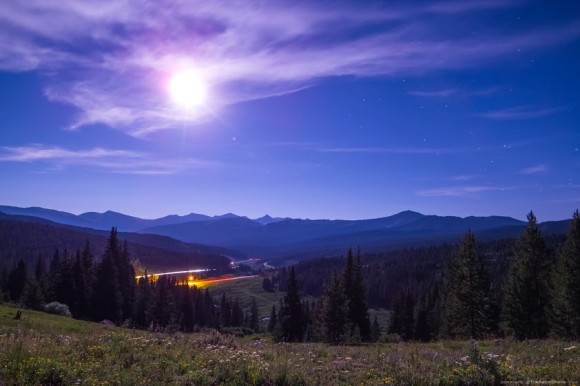
Beautiful Timelapse of a Triple Planetary Conjunction
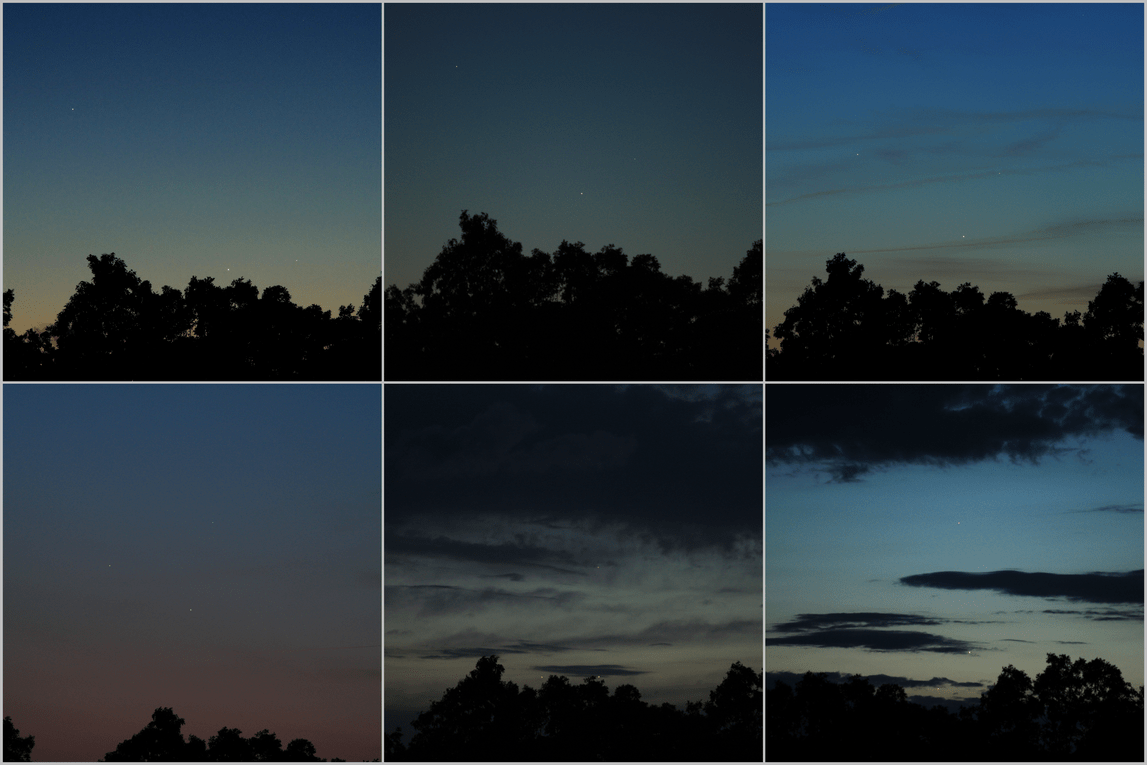
We’ve shared oodles of great images from the recent planetary conjunction of Jupiter, Mercury and Venus, visible in the evening skies last week. But this video from astrophotographer César Cantú is just plain beautiful. On the evening of May 25, the conjunction of the three planets formed a triangle that moved through the sky, as seen from Big Bear Park in California, USA. César said via Twitter that the “star” effect was create by processing the video or with 4,6 or 8 point star filters.
And we’ve got one more conjunction image to share — actually six.
Joe Shuster from Salem, Missouri had six great evenings of photographing the planetary conjunction, and put them together into one collage. He used a Canon T1i and Nikkon 105mm lens. Lucky guy!
Magnificent New Timelapse: Death Valley Dreamlapse 2
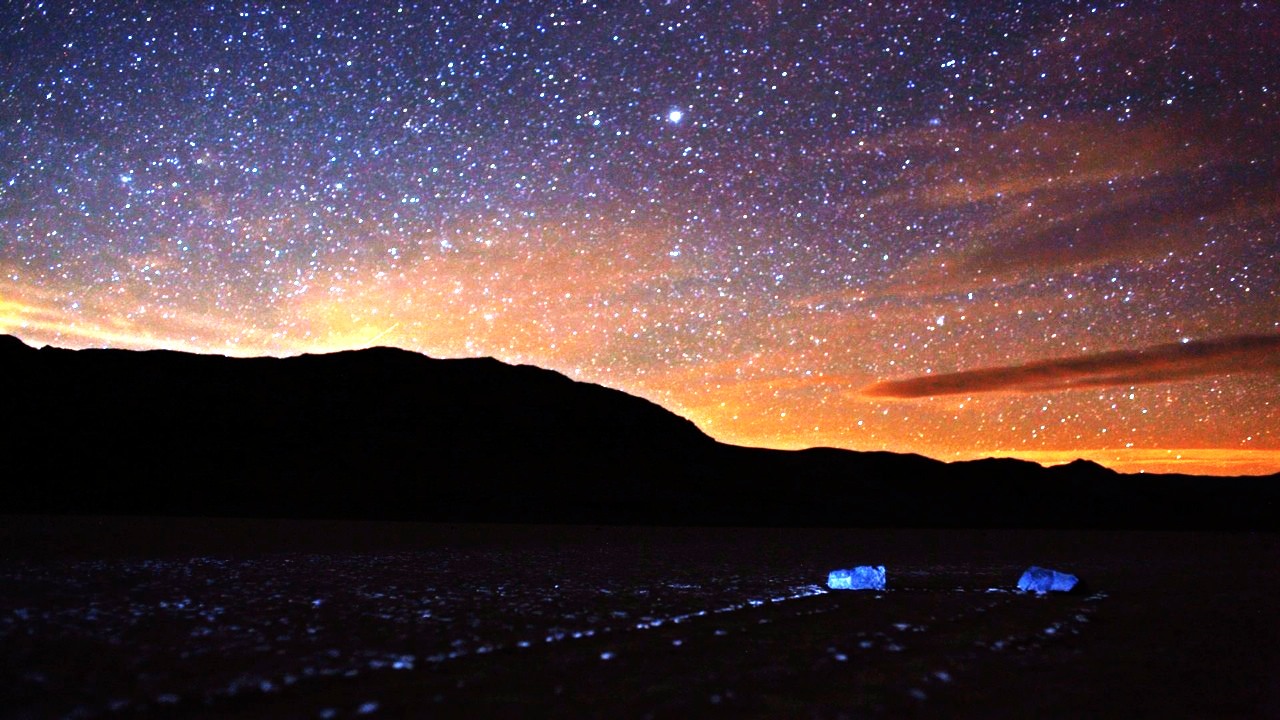
Have you ever dreamed of camping out under the dark skies of Death Valley? Dream no more: you can enjoy this virtual experience thanks to Gavin Heffernan and his Sunchaser Pictures crew. This magnificent new timelapse video includes some insane star trails, the beautiful Milky Way, and an incredible pink desert aurora!
“As you can see, Death Valley is a crazy place to shoot at,” Gavin said via email to Universe Today, “as the horizon is so strangely uneven/malleable. I don’t know if the valley was cut by water or underground magma, but it’s almost impossible to find a straight horizon.” See some great images from their video, below:
Gavin said he and his team tried out some new timelapse techniques, like moonpainting the foreground landscapes (0:53 — 1:20), and also some experiments merging regular timelapse footage with star trails — “a technique we’ve been calling Starscaping (1:07:1:33)” he said. “If it has an actual name, let us know! 🙂 Star Trails shot at 25 sec exposures. No special effects used, just the natural rotation of the earth’s axis. Photography Merging: STARSTAX. Used two Canon EOS 5Dmkii, with a 24mm/1.4 lens & 28mm/1.8.”
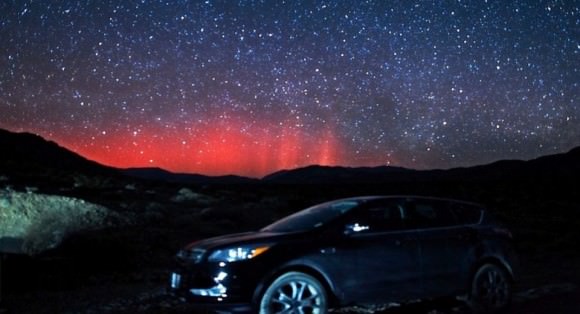
See their original Death Valley Dreamlapse here, as well as a behind the scenes “making of” video for this second Death Valley Dreamlapse. Sunchaser Pictures also has a new Facebook page, so “like” them!
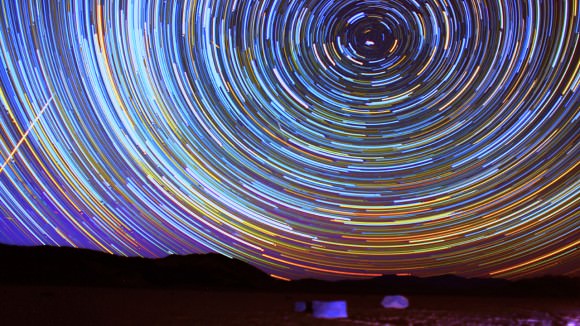
Stunning Death Valley ‘Dreamlapse’
Here’s yet another gorgeous timelapse from Gavin Heffernan and his team. As we previewed in our Geminid Meteor Shower post, the Sunchaser Pictures team trekked to the world-famous Eureka Dunes in Death Valley National Park to search for some of the darkest skies on Earth during the meteor shower peak on the night of December 13th, 2012. They braved a long journey, a tough climb cold temperatures.
“But it was all worth it when the skies cleared and showed us an incredible galactic palette!” Gavin writes on Vimeo.
In addition to Geminids, there are star trails, planets and a weird spiraling object at about 1:30-1:35. It makes three broad circular sweeps over the desert – although in timelapse it appears to be moving fast, but the 5 seconds of time in timelapse equals about 50 minutes, so it’s actually not moving all that fast. It can also be seen cutting through the circular star trails picture below. There’s another 25-second exposure that of the object moving that makes it look almost like a colored rope.
“I don’t think that ‘rope’ look is unusual for a normal plane etc.,” Gavin told Universe Today via email. “The circular motion, and very slow movement are what really make it interesting/unusual. It’s definitely worth noting that the site is definitely near some kind of military installation or air force base, because we saw the spectacular sight of F-16 fighter planes zooming over the dunes, not too far off the ground. I know for sure it wasn’t a helicopter, because we would have heard it.”
Shots from the timelapse:
